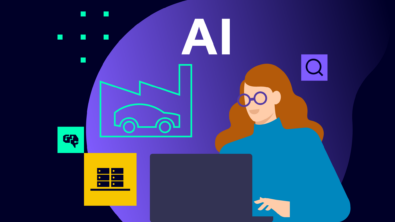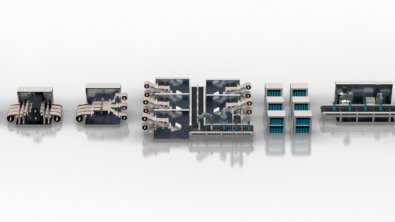PLM Machine Builders and Teamcenter X address manufacturers’ challenges in an ETO and CTO environment


Cloud technology profoundly impacts product development and business operation manufacturing processes. Our PLM Machine Builders podcast series is proud to air an encore presentation of the third episode in this series, focusing on PLM Teamcenter X, examining how machine builders can blend their engineer-to-order (ETO) and configure-to-order (CTO) demands.
Our engineering experts, Chris Pennington, Global Industry Marketing Leader for Industrial Machinery at Siemens Digital Industries Software, and Jaques Mostert, Solution Director for Industrial Machinery at Siemens Digital Industries Software, discuss the PLM system and Teamcenter process, which supplies equipment on an engineer-to-order base – a challenge to deliver profitably over time.

Engineer-to-order (ETO) comes inherently with risks when performing a task for the first time. Therefore, companies must find ways to reuse design, which leads to a configure-to-order (CTO) process. There is a unique individuality to each machine; thus, industrial machinery customers need companies that make distinctive products. And, though some reuse is possible, it must be consistent with previous work.
Combining engineer-to-order and configure-to-order
It is essential to combine ETO and CTO in an engineering environment. Subsequently, as machines get smarter, the software electronics do as well, being vital to the product and creating more complexity, which means the electrical engineer’s job is not merely making mechanical components move.
Also, there’s an overarching emphasis on improving profitability, as complexity could be more manageable via spreadsheets and emails. Thus, it’s crucial to have a managed environment where multidisciplinary teams collaborate in real-time via PLM for machine builders.
PLM for Machine Builders is a preconfigured system that’s ready out of the box. As most machines are unique, companies must work in an ETO and CTO manner. The solution must allow companies to manage the requirements they see from customers because of the engineering-to-order aspect, addressing changes and managing them effectively.
A cloud solution foundation
Moreover, the cloud solution is the bedrock of all design processes, allowing control of CAD data supplied by Siemens and primary CAD vendors. When CAD data is in the cloud, the PLM system provides the global team access to the most recent versions with materials directly derived from CAD. Additionally, lightweight 3D models and 3D drawings via the built-in viewer are available to those without access.
However, machine builders must address several challenges like pandemics, supply chains, or massive disruptions that can apply pressure on machinery companies. Consequently, more productivity is essential to accomplishing more at lesser costs. Also, skilled talent is vital for automated and smarter factories as machines are more connected with additional sensors controlled by sophisticated automation systems.
“All these smart and connected machines generate massive amounts of data that must be analyzed. Or they can be analyzed to improve processes and drive more optimization. If you take all this back to the engineering perspective, it all results in a much more complex engineering process…as machine builders play smarter connected machines into the field, these machine builders are learning to track your operational life data,” says Jaques Mostert
So, the machines-as-a-service doesn’t merely sell them the machine but the throughput of the machine. This setup is a new process that’s challenging the conventional operating models. As such, machine builders are addressing complicated scenarios like improving productivity through a blended ETO and CTO managing machine configurations to maximize use while remaining flexible to customer requirements.
A Siemens-developed solution
Although the PLM system can perform these tasks, it can be complicated to implement – a slight hurdle for small- to medium-sized companies using the software. Subsequently, cloud solutions enable small and medium-sized companies to access PLM systems to update, maintain and manage complexity.
Indeed, being it is Siemens-developed software, it’s the best place to upgrade and maintain it – which is the basis of a Siemens solution. It allows these companies to begin their PLM journey, and if the company grows and finds that machine builders are insufficient, then Teamcenter is there to extend capabilities later.
Learn more about PLM Machine Builders and Teamcenter X capabilities in the podcast episode.
Siemens Xcelerator, the comprehensive and integrated portfolio of software and services from Siemens Digital Industries Software, helps companies of all sizes create and leverage a comprehensive digital twin that provides organizations with new insights, opportunities and levels of automation to drive innovation.
For more information on Siemens Digital Industries Software products and services, visit siemens.com/software or follow us on LinkedIn, Twitter, Facebook and Instagram. Siemens Digital Industries Software – where today meets tomorrow.


